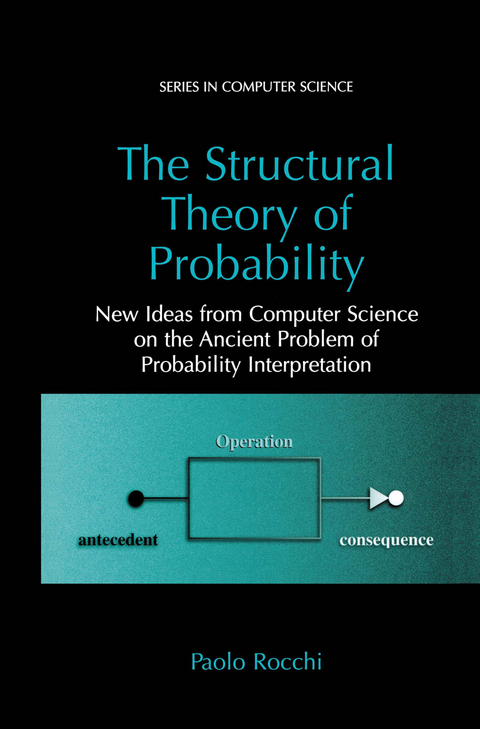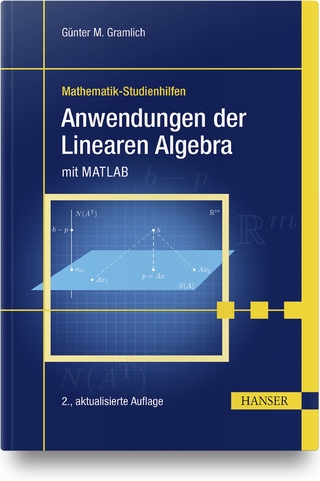
The Structural Theory of Probability
Springer-Verlag New York Inc.
978-1-4613-4927-3 (ISBN)
The Structural Theory of Probability addresses the interpretation of probability, often debated in the scientific community. This problem has been examined for centuries; perhaps no other mathematical calculation suffuses mankind's efforts at survival as amply as probability. In the dawn of the 20th century David Hilbert included the foundations of the probability calculus within the most vital mathematical problems; Dr. Rocchi's topical and ever-timely volume proposes a novel, exhaustive solution to this vibrant issue.
Paolo Rocchi, a versatile IBM scientist, outlines a new philosophical and mathematical approach inspired by well-tested software techniques. Through the prism of computer technology he provides an innovative view on the theory of probability. Dr. Rocchi discusses in detail the mathematical tools used to clarify the meaning of probability, integrating with care numerous examples and case studies. The comprehensiveness and originality of its mathematical development make this volume an inspiring read for researchers and students alike.
1 Cultural Roots.- 1.1 Operational analysis.- 1.2 Networks.- 1.3 Innovative improvements.- 2 Critical Remarks.- 2.1 Random events overlooked.- 2.2 Ensemble model.- 2.3 Linguistic model.- 2.4 Which is the probability argument?.- 2.5 A new proposal.- 3 Events and Structures.- 3.1 Connecting is primitive.- 3.2 Entities, relationships and structures.- 3.3 Abstract algebra.- 3.4 Structural model.- 3.5 Structure’s advantages.- 3.6 Successful structures.- 4 Notes on Structural Analysis.- 4.1 Main mechanisms in events.- 4.2 Basic structural forms.- 4.3 Three singular cases.- 4.4 Why they do not have a general application.- 5 Certainty and Uncertainty.- 5.1 Difficulties in investigating the reality.- 5.2 Uncertain details.- 5.3 Structure of levels.- 5.4 What the levels make explicit.- 5.5 Certain and uncertain structures.- 5.6 Uncertainty and randomness.- 5.7 Progressive qualities of knowledge.- 6 Probability.- 6.1 The problem of being.- 6.2 Definition of probability.- 6.3 Advantages from the definition.- 7 Relative Frequency.- 7.1 Rounding.- 7.2 Experimental test.- 7.3 Frequency and probability are identical.- 7.4 Frequency and probability do not coincide.- 7.5 The Law of large numbers.- 7.6 Practical applications of the law.- 8 Objectivism and Subjectivism.- 8.1 The meaning of probability.- 8.2 Theoretical schools.- 8.3 Theory and praxis.- 8.4 Science of indeterminism.- 9 Probability Calculus.- 9.1 The Laplace formula.- 9.2 Function of probability.- 9.3 Theorem of compound probabilities.- 9.4 Theorem of total probabilities.- 9.5 Closing remarks.- 10 Conditional Probability.- 10.1 Effects from causes.- 10.2 Dependence and independence.- 10.3 Probability of the third singular case.- 10.4 The Bayes theorem.- 11 Stochastic Systems.- 11.1 Transition matrix.- 11.2Chapman-Kolmogorov’s theorem.- 11.3 State matrix.- 11.4 Evolution theorem.- 12 Distributions.- 12.1 Distribution functions.- 12.2 Constant distribution.- 12.3 Binomial distribution.- 12.4 Poisson’s distribution.- 12.5 Normal distribution.- 12.6 Compound distributions.- 13 Bivalent and Multivalent Logic.- 13.1 Probability and language.- 13.2 Values of truth and probability.- 13.3 Logic calculus.- 14 Two Applications.- 14.1 Exercise I.- 14.2 Exercise II.- Appendix: History’s Lessons.- 1 Classical culture.- 2 The rule of apodictic reasoning.- 3 Uncertainty appears in jurisprudence.- 4 People begin to calculate chances.- 5 Statistics emerges.- 6 Two veins merge.- 7 Toward a systematic study.- 8 Several fields are invaded.- 9 Multivalent logic.- 10 The fundamentals are still obscure.- Index of Subjects.- Index of Names.
| Reihe/Serie | Series in Computer Science |
|---|---|
| Zusatzinfo | IX, 162 p. |
| Verlagsort | New York, NY |
| Sprache | englisch |
| Maße | 155 x 235 mm |
| Themenwelt | Mathematik / Informatik ► Mathematik ► Algebra |
| Mathematik / Informatik ► Mathematik ► Wahrscheinlichkeit / Kombinatorik | |
| Naturwissenschaften | |
| Technik | |
| Wirtschaft ► Volkswirtschaftslehre ► Mikroökonomie | |
| ISBN-10 | 1-4613-4927-3 / 1461349273 |
| ISBN-13 | 978-1-4613-4927-3 / 9781461349273 |
| Zustand | Neuware |
| Haben Sie eine Frage zum Produkt? |
aus dem Bereich


